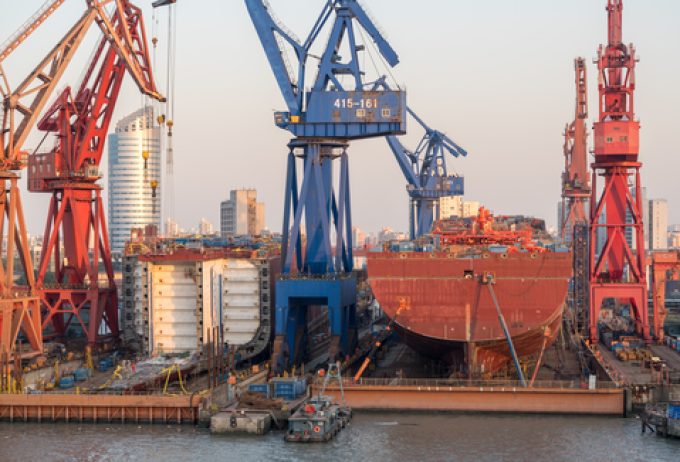Box ship building in China hits new heights with 68.5% of global orders
China Dominates Global Containership Construction

China has firmly established itself as the leading force in the global containership building industry. Recent data from Alphaliner reveals that China’s order book extends to 2030 and is nearly three times larger than that of its closest competitor, South Korea. This significant lead highlights China’s growing influence in maritime logistics and shipbuilding. The shift in dominance began in 2015 when China first surpassed South Korea in the number of box ships built. However, this initial lead was not indicative of a long-term trend, as overall ordering activity was low at that time. Since then, the landscape has changed dramatically, with China asserting its dominance in the sector.
China’s Ascendancy in Shipbuilding
In 2020, Chinese shipyards reclaimed their position as the leaders in containership construction. They accounted for a staggering 68.5% of the global box ship order book in terms of twenty-foot equivalent units (TEU) capacity. In contrast, South Korea holds a mere 23.3% of the market. The trend has been particularly pronounced since the COVID-19 pandemic, which spurred a boom in newbuilding orders. In 2020 alone, Chinese yards received orders totaling 630,000 TEU, compared to South Korea’s 380,000 TEU. This year, the gap has widened even further, with Chinese shipyards receiving an astonishing 3.61 million TEU in orders, while South Korea managed only 660,000 TEU.
Maersk’s first methanol-powered box ship sets sail on maiden voyage
The reasons behind China’s success are multifaceted. Chinese shipyards offer competitive pricing that is difficult for other countries to match. They also have a larger capacity for orders, allowing them to take on more projects simultaneously. Many Chinese shipyards are committed to massive expansion projects, which will create additional newbuilding slots for 2027 and beyond. Notable examples include Times Shipyard (NTS) and Yangzijiang (YZJ), where new slots have been quickly filled by eager customers. Alphaliner predicts that once the current boom subsides and the order book shrinks, South Korea will struggle to maintain its position in the market.
Shifting Preferences Among Shipping Carriers
The preferences of shipping carriers also play a crucial role in shaping the shipbuilding landscape. Major companies like Hapag-Lloyd, Cosco, Maersk, and MSC have increasingly favored Chinese shipyards for their new vessels. This trend is evident in MSC’s recent partnership with Hengli Group to revive ship construction at the former STX Dalian shipyard in China. This collaboration aims to produce numerous large vessels, further solidifying China’s position in the industry.
On the other hand, South Korean state-controlled carrier HMM remains a staunch supporter of domestic shipyards. Meanwhile, Ocean Network Express (ONE) has shown a preference for Japanese yards, while companies like Yang Ming, Wan Hai, and Evergreen tend to diversify their orders among Taiwan, Korea, and Japan. Despite ONE’s commitment to domestic manufacturing, many of its recent orders have gone to Korean and Chinese shipyards. Similarly, Danish carrier Maersk, which once built ships at its own facility in Odense, has shifted its production to China after closing its shipyard in 2012.
As the global shipping industry continues to evolve, China’s dominance in containership construction appears set to grow. With a robust order book and a commitment to expansion, Chinese shipyards are well-positioned to meet the demands of the future.
